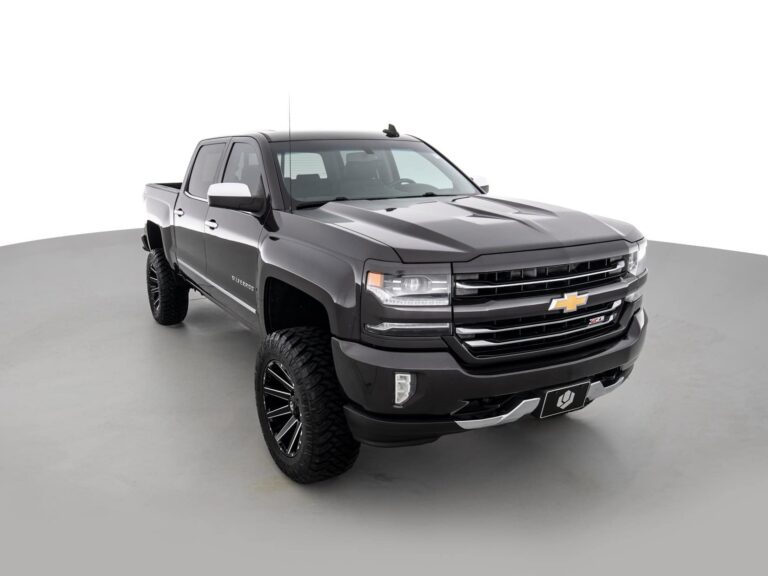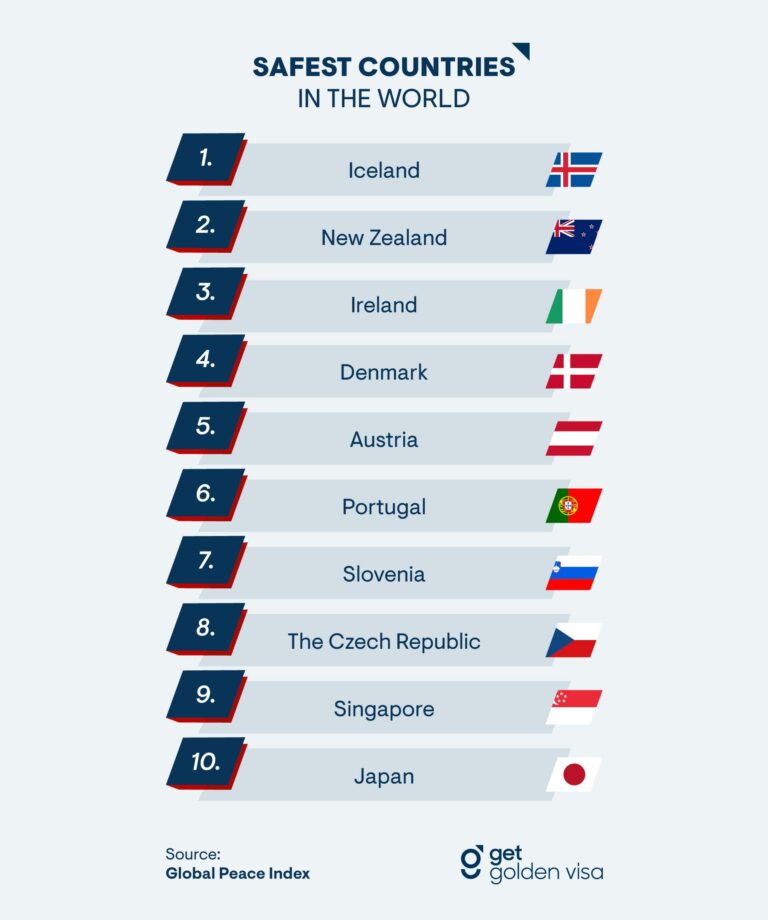High End Car Brand Logos: More Than Just a Badge
High End Car Brand Logos: More Than Just a Badge cars.truckstrend.com
In the opulent world of high-end automobiles, a car is far more than a mode of transport; it’s a statement, a legacy, and a testament to engineering prowess and artistic design. At the heart of this identity lies the brand logo – a minuscule yet immensely powerful symbol that encapsulates the very essence of luxury, performance, and heritage. Far from being a mere decorative element, high-end car brand logos are meticulously crafted emblems, each telling a story of innovation, aspiration, and exclusivity. They are visual shorthand for decades, sometimes centuries, of automotive excellence, instantly recognizable and deeply resonant with enthusiasts and connoisseurs worldwide. Understanding these logos is to understand the soul of the brands they represent, appreciating the subtle nuances that elevate them from simple badges to iconic symbols of status and unparalleled quality.
The Art of Symbolism: Decoding Luxury Car Emblems
High End Car Brand Logos: More Than Just a Badge
High-end car brand logos are masterpieces of symbolic design, often drawing inspiration from heraldry, mythology, nature, and the founding principles of their creators. Each element, from the choice of animal to the angle of a line, is deliberate, imbued with meaning that resonates with the brand’s core values.
- The Prancing Horse (Ferrari): Perhaps one of the most globally recognized emblems, Ferrari’s Cavallino Rampante (prancing horse) symbolizes power, speed, and untamed spirit. Gifted to Enzo Ferrari by the parents of a heroic Italian WWI pilot, Francesco Baracca, the horse on a yellow background (Maranello’s official color) is a direct link to a legacy of courage and victory, mirroring Ferrari’s dominance on the race track.
- The Charging Bull (Lamborghini): Ferruccio Lamborghini, a passionate bullfighting enthusiast, chose a powerful, aggressive bull as his company’s emblem. This striking symbol reflects the brand’s no-compromise attitude towards performance, its bold designs, and its direct rivalry with Ferrari. Many Lamborghini models are also named after famous fighting bulls, reinforcing this visceral connection.
- The Porsche Crest: A rich tapestry of heritage, the Porsche crest incorporates elements from the Free People’s State of Württemberg’s coat of arms and Stuttgart’s city seal. The black horse symbolizes the city’s origins as a stud farm, while the antlers and red and black stripes represent the Württemberg region. It’s a powerful emblem of Stuttgart’s proud automotive tradition and Porsche’s commitment to its roots.
- The Spirit of Ecstasy (Rolls-Royce): More than just a logo, the "Spirit of Ecstasy" is a sculpture, an ethereal figure leaning forward with arms outstretched, evoking speed and grace. Commissioned by Lord Montagu of Beaulieu for his Rolls-Royce, this mascot, designed by Charles Sykes, perfectly embodies Rolls-Royce’s unparalleled elegance, silent power, and luxurious journey. It stands as a testament to bespoke craftsmanship and timeless allure.
- The Three-Pointed Star (Mercedes-Benz): Simple yet profoundly symbolic, the Mercedes-Benz three-pointed star represents the brand’s ambition to motorize land, sea, and air. Born from a vision of Gottlieb Daimler, it signifies universal dominance and technological superiority across all forms of mobility, reflecting the company’s engineering excellence and innovation.
- The Four Rings (Audi): The interlocking four rings of Audi symbolize the merger of four previously independent automobile manufacturers – Audi, Horch, DKW, and Wanderer – into Auto Union AG in 1932. This emblem is a powerful statement of unity, strength through collaboration, and a shared commitment to progressive technology and design.
- The Roundel (BMW): While often debated, the widely accepted interpretation of the BMW roundel is a stylized propeller against a blue sky, reflecting BMW’s origins as an aircraft engine manufacturer. The blue and white colors are also those of the Bavarian Free State. It signifies precision engineering, speed, and a connection to the skies, embodying the brand’s performance-driven legacy.

These emblems are not just pictures; they are narratives compressed into powerful visual forms, instantly conveying the brand’s philosophy and character.
Heritage and Evolution: The Stories Behind the Logos
The journey of a high-end car logo is often as rich and complex as the history of the brand itself. Many iconic logos have evolved over decades, adapting to new eras and design trends while meticulously preserving their core identity and heritage.
For instance, the BMW roundel has seen subtle refinements over the years, most recently adopting a flatter, two-dimensional design for digital applications, yet its fundamental blue and white quadrants remain unmistakable. Similarly, the Porsche crest has undergone minor tweaks to its details and proportions, but the horse, antlers, and stripes are immutable elements that tie it directly to its origins.
This commitment to heritage is crucial in the luxury segment. Consumers buying high-end vehicles are often investing in a legacy, a tradition of excellence. The logo serves as a tangible link to this past, assuring buyers of the brand’s enduring values and quality. It’s a delicate balance: modernizing the aesthetic for contemporary appeal without diluting the historical significance that gives the logo its weight and authenticity. The narrative behind a logo, often steeped in the personal stories of founders or significant historical events, adds layers of depth and emotional connection that generic branding simply cannot achieve.
Design Principles of High-End Car Logos
The enduring power of high-end car logos stems from adherence to timeless design principles that transcend fleeting trends.
- Simplicity and Recognition: Despite their deep symbolism, these logos are often remarkably simple in their final form, ensuring instant recognition. The Mercedes-Benz star or the Audi rings are prime examples – clean, uncluttered, and immediately identifiable.
- Elegance and Sophistication: The aesthetic is paramount. High-end logos exude sophistication through balanced proportions, refined typography, and a sense of understated luxury. They avoid excessive embellishment, letting the quality of the design speak for itself.
- Timelessness: These logos are designed to endure. They steer clear of trendy elements that might quickly become dated, aiming for a classic appeal that remains relevant across generations. This contributes to their iconic status and reinforces the idea of lasting value.
- Premium Materials and Craftsmanship: The physical manifestation of the logo on the vehicle itself is a critical design consideration. High-end car logos are often crafted from premium materials like polished chrome, brushed aluminum, enamel, or even precious metals. The meticulous finish, the tactile feel, and the way light plays off their surfaces contribute to the perception of quality and luxury. The Spirit of Ecstasy, for example, is hand-finished and can even be ordered in solid gold or illuminated.
- Legibility and Scalability: A successful logo must be legible and impactful across a vast range of sizes and applications, from the large grille badge to the small key fob, from digital advertisements to embroidered seatbacks. Their clear lines and distinct shapes ensure they remain effective regardless of the medium.
- Psychology of Color: Colors play a vital role. Silver and chrome finishes convey modernity, precision, and technology. Gold evokes opulence and prestige. Deep blues and blacks suggest sophistication and authority. Reds, particularly in performance brands like Ferrari, symbolize passion, speed, and power.
The Role of Logos in Brand Perception and Value
Logos are incredibly powerful tools in shaping brand perception and influencing consumer behavior. For high-end cars, the logo acts as a silent ambassador, communicating the brand’s values and promise before a single word is spoken or a wheel is turned.
- Shorthand for Brand Values: A logo instantly conjures associations: Mercedes-Benz signifies luxury and reliability, Porsche screams performance and precision, Rolls-Royce embodies ultimate exclusivity and comfort. These associations are built over decades of consistent brand messaging, product quality, and marketing.
- Influence on Purchase Decisions: For many, the logo is a key driver in the purchase decision. It’s not just about the car’s features but the prestige and identity associated with the badge. Owning a car with a particular high-end logo is a statement about the owner’s aspirations, achievements, and taste.
- Contribution to Resale Value and Brand Equity: Strong, recognizable logos contribute significantly to a brand’s equity and the resale value of its vehicles. The desirability of the brand, encapsulated in its logo, translates into sustained market demand and higher retained value compared to lesser-known marques.
- Brand Protection and Anti-Counterfeiting: The prominence and value of these logos make them targets for counterfeiters. Brands invest heavily in protecting their intellectual property, as fake logos on imitation products can dilute brand value and mislead consumers. The intricate details and high-quality finishes of genuine high-end logos often serve as subtle deterrents.
Beyond the Badge: Logo Placement and Integration
The impact of a high-end car logo extends beyond its design; its strategic placement and consistent integration across all brand touchpoints are crucial.
- Prominent Placement: The most obvious placement is on the car’s grille, serving as the vehicle’s "face" and primary identifier. Logos also adorn wheel caps, steering wheels, engine covers, key fobs, and even subtle interior details like seat stitching or dashboard accents.
- Consistency Across Touchpoints: From showrooms and marketing materials to owner’s manuals and digital interfaces, the logo’s appearance is meticulously controlled to ensure consistency. This unified presentation reinforces the brand identity and creates a cohesive luxury experience.
- The "Experience" of Interaction: Interacting with a high-end car often means interacting with its logo. The satisfying click of a branded key fob, the glint of the emblem on the steering wheel as you grip it, or the illuminated badge on the grille at night – these small moments enhance the overall luxury experience and deepen the emotional connection with the brand.
Challenges and Future Trends
Even iconic high-end car logos face evolving challenges in a rapidly changing automotive landscape.
- Maintaining Relevance in an EV Era: As the industry shifts towards electric vehicles, traditional symbols tied to combustion engines (like the BMW propeller) might need subtle reinterpretation or increased emphasis on broader brand values. Brands are exploring illuminated logos and digital displays for EV applications.
- Minimalism vs. Heritage: There’s a general trend towards minimalist, flat design in digital branding. High-end car brands must balance this contemporary aesthetic with the need to preserve the rich, often three-dimensional heritage of their physical emblems. Many opt for simplified 2D versions for digital use while retaining the ornate physical badges.
- Sustainability: As environmental concerns grow, the materials used for logos might come under scrutiny. Brands may explore more sustainable, recycled, or ethically sourced materials for their emblems without compromising on luxury feel.
- Digital Rendering and Animation: Logos are no longer static. In in-car infotainment systems, digital dashboards, and marketing campaigns, logos can be animated, bringing a dynamic element to their presentation and further enhancing the futuristic appeal of modern luxury vehicles.
Practical Advice and Actionable Insights
For enthusiasts and potential buyers, understanding these logos enriches the appreciation of high-end vehicles. Look beyond the car’s performance figures; delve into the story behind the badge. It adds a layer of depth to your understanding of the brand’s philosophy and heritage. For aspiring designers or entrepreneurs, the success of high-end car logos offers invaluable lessons: prioritize timelessness over trends, understand the power of symbolism, and recognize that quality and consistency in execution are paramount for building a truly powerful brand identity.
Concluding Summary
High-end car brand logos are far more than simple identifiers; they are condensed narratives, embodying centuries of history, innovation, and aspiration. They are meticulously designed symbols that resonate deeply with consumers, conveying prestige, performance, and unparalleled luxury. From the iconic prancing horse to the elegant Spirit of Ecstasy, these emblems are the silent storytellers of the automotive world, cementing a brand’s identity, influencing perception, and ultimately contributing significantly to the enduring allure and value of the vehicles they adorn. They stand as enduring testaments to the art of branding, proving that true luxury is often captured in the smallest, yet most significant, details.
Illustrative Price Ranges of Vehicles Represented by High-End Car Brand Logos
| Brand | Logo Description | Typical Vehicle Price Range (USD) | Key Brand Value Symbolized by Logo |
|---|---|---|---|
| Ferrari | Prancing Horse (Cavallino Rampante) | $200,000 – $3,000,000+ | Speed, Passion, Exclusivity, Racing Heritage |
| Lamborghini | Charging Bull | $200,000 – $500,000+ | Raw Power, Aggressive Design, Uncompromising Performance |
| Porsche | Stuttgart Coat of Arms & Württemberg Shield | $60,000 – $300,000+ | Precision Engineering, Sports Car Purity, Performance, Heritage |
| Rolls-Royce | Spirit of Ecstasy (Mascot) | $350,000 – $1,000,000+ | Ultimate Luxury, Bespoke Craftsmanship, Silent Power, Unrivalled Prestige |
| Mercedes-Benz | Three-Pointed Star | $40,000 – $300,000+ | Engineering Excellence, Luxury, Innovation, Reliability |
| Audi | Four Interlocking Rings | $35,000 – $180,000+ | Progressive Technology, Sophistication, Unity, Quattro Performance |
| BMW | Blue and White Roundel | $40,000 – $180,000+ | Driving Dynamics, Sportiness, Precision, Bavarian Heritage |
| Aston Martin | Winged Badge | $150,000 – $350,000+ | Elegance, Grand Touring, British Craftsmanship, Performance |
| Bentley | Flying "B" Wings | $200,000 – $400,000+ | Opulence, Performance, British Luxury, Hand-built Quality |
| Maserati | Trident | $80,000 – $200,000+ | Italian Heritage, Sportiness, Style, Exclusivity |
Note: The prices listed are typical starting prices and can vary significantly based on model, trim, customization options, and market conditions.
Frequently Asked Questions (FAQ) about High-End Car Brand Logos
Q1: What makes a car logo "high-end"?
A1: A high-end car logo is characterized by its sophisticated design, deep symbolism, rich heritage, and the premium materials used in its physical manifestation. It instantly conveys the brand’s values of luxury, performance, exclusivity, and meticulous craftsmanship, becoming a powerful symbol of status and aspiration.
Q2: Do high-end car logos change often?
A2: Generally, no. High-end car brands prioritize timelessness and heritage. While logos might undergo subtle refinements (e.g., flatter designs for digital use) or minor updates to proportions and finishes over decades, their core elements and symbolism remain remarkably consistent to preserve brand identity and legacy.
Q3: Are luxury car logos made of precious metals?
A3: While most standard production logos are made from high-quality metals like chrome, aluminum, or stainless steel with premium finishes (e.g., polished, brushed, enameled), some ultra-luxury brands offer options for logos made from precious metals like gold, sterling silver, or with embedded diamonds, often for bespoke models or special editions. The Rolls-Royce Spirit of Ecstasy, for example, can be commissioned in solid gold.
Q4: What’s the most expensive car logo in the world?
A4: This is subjective, as the logo itself isn’t sold separately as a piece of art usually. However, the physical "Spirit of Ecstasy" mascot on a Rolls-Royce is often cited as one of the most valuable, especially when commissioned in precious metals or illuminated. Beyond the physical object, the "value" of a logo is its contribution to the brand’s overall equity, which for top-tier brands runs into billions of dollars.
Q5: How do logos influence a car’s value?
A5: Logos significantly influence a car’s perceived value and, consequently, its market and resale value. A strong, prestigious logo acts as a guarantee of quality, performance, and exclusivity, making the car more desirable. This desirability translates into higher demand and better retention of value compared to vehicles from less prestigious brands.
Q6: Can I buy a high-end car logo separately?
A6: You can often purchase replacement physical emblems (like grille badges or wheel caps) from official dealerships or authorized parts suppliers if yours is damaged or lost. However, you cannot "buy" the brand’s logo in the sense of owning its intellectual property or the full brand identity it represents.



